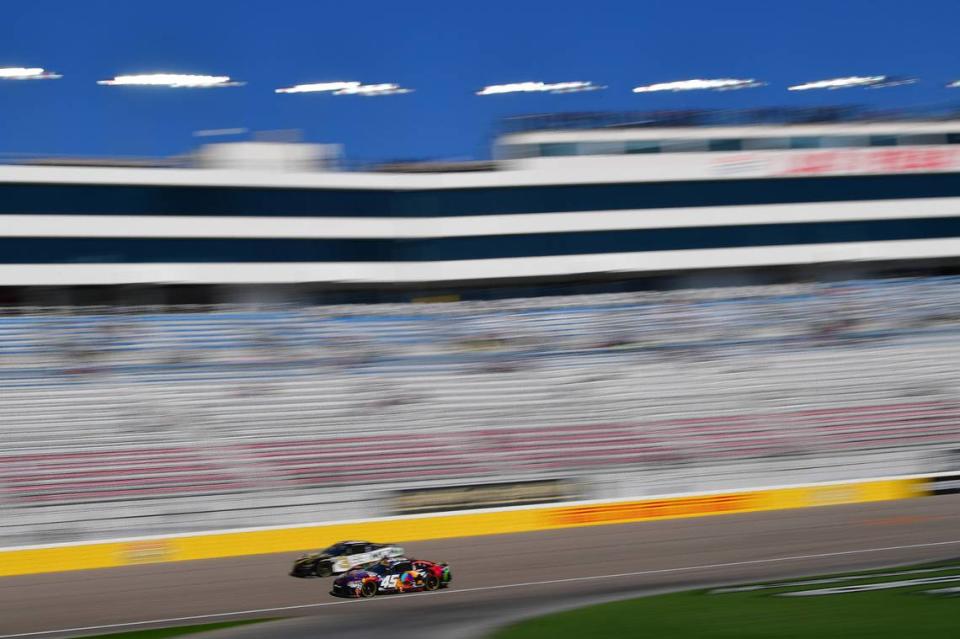NASCAR changing qualifying procedure for starting lineup in Cup Series, more updates
Qualifying will look a little different in the NASCAR Cup Series this year.
The 36-plus drivers in each race will still be split into two groups, with the fastest five advancing to the pole round and setting the top 10 starting positions. But the procedure for determining the rest of the lineup has changed.
Previously, cars outside the Top 10 after qualifying were seeded from 11 to 40 based on their fastest qualifying lap.
Now, with the exception of the Daytona 500, cars that do not advance from Group A will determine the outside row for starting positions 11-40, while the remaining cars from Group B will make up the inside row. There will be no groups, but still two rounds, during qualifying on superspeedway races.

This adjusted qualifying procedure was one of several topics discussed Tuesday at the Research and Development Center. Auto racing’s top circuit continues looking for ways to innovate, and while it’s still ways away from this being a mainstay, fans will see an electric car on a track next weekend.
“We are a sport investing in ourselves, and also looking into the future to see where we need to be five years, 10 years down the road,” NASCAR’s chief racing development officer, John Probst, told reporters. “Not a tomorrow technology, but certainly something that is on the radar for sometime into the future.”
Here’s what else you need to know from NASCAR’s annual competition briefing:
NASCAR fans will see an electric car
A newly-designed electric compact utility vehicle, with lights, will be on the track for a demonstration during festivities at next weekend’s Busch Light Clash in Los Angeles. NASCAR tested it in Martinsville last December, having it run 340 laps over three days. There are no current plans for an electric series, but NASCAR said it is developing technology to potentially investigate hydrogen combustion and other types of electric vehicles in the future. The car will be driven by 38-year-old part-time driver David Ragan in the demonstration.
New mufflers for the Clash and Chicago
They previously used two different designs of mufflers for the Clash at the Coliseum In Los Angeles, and the Chicago Street Race, and the heat in the cockpit and overall packaging weren’t great with either. A new muffler, which uses a different design to decrease the amount of heat generated, was tested at Phoenix last December and it went around 230 miles on the setup. The decibel level reduced between four and six percent.
Stage breaks return to road courses
Done in collaboration with the industry, broadcast partners, teams, NASCAR will keep stage breaks on all road courses, including the Charlotte Roval. Officials mentioned tracks like Indianapolis and Watkins Glen producing sub-two-hour races not being the best racing for fans, and they feel stage breaks will ensure better, more competitive racing.
More changes for the season
Light-up boards in pit boxes. Cup Series teams will be able to showcase their sponsors on LED sign boards inside their pit boxes this year. This will increase sponsorship and give sponsors more opportunities to represent their brand at the sport’s highest level. The signs will be required to have dimmer switches and not change the logo while the race is under green.
The damaged vehicle policy will remain the same. The DVP clock will still be seven minutes, with an extra minute added at Atlanta.
Remote race control will be used more. NASCAR wants to train its next generation of race directors and pit road officiators from its new productions building in Concord. It’s studied the National Hockey League and other leagues that have implemented remote officiating and wants to get more comfortable with it. For the past three years, officiators have already been in uptown Charlotte helping out remotely.


